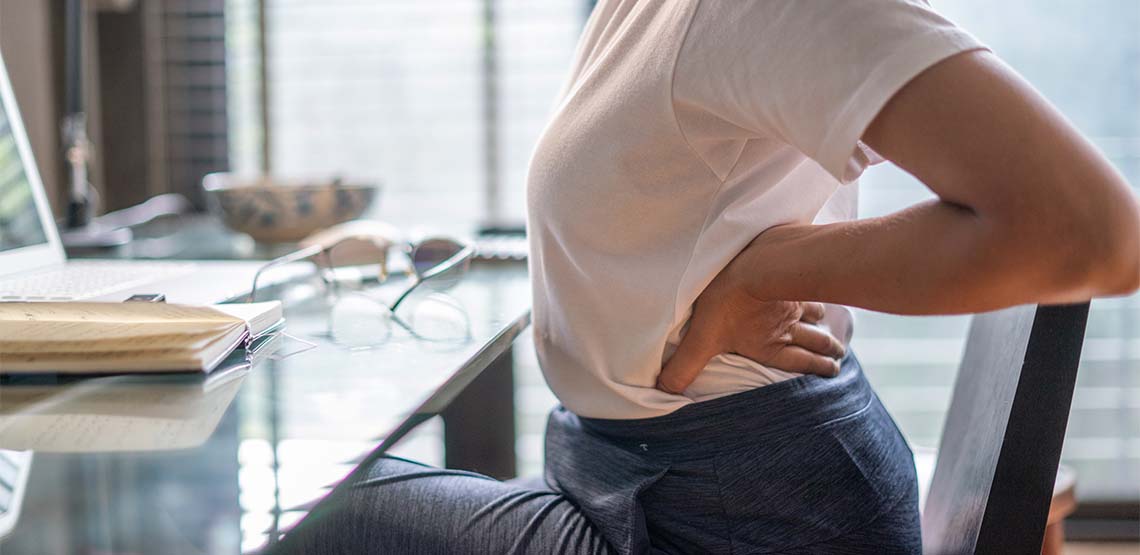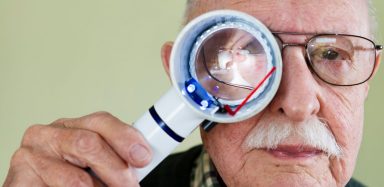Lower Back Pain Causes in a Female
As you get older, you might notice that body aches and pains become more common. Lower back pain is one of the most common reasons people miss a day of work or visit their doctor. Back pain is not a disease in itself but rather a symptom of something else. Lower back pain can start suddenly or slowly worsen over time. Prolonged lower back pain is known to affect both your physical and mental health. For this article, we will focus on low back pain causes in a female, as they can differ from a male.
Many studies show that women are naturally at a higher risk of suffering from lower back pain when compared to men. This is thought to be due to a combination of genetics, hormones and female co-morbidities. Lower back pain can be a minor issue for some, but it may be something more sinister.
The Most Common Causes of Female Lower Back Pain
Some causes of lower back pain are specific to women only; others are more common in women than men. The following are the most common causes.
1. Menstruation
Lower back pain is a common symptom of a woman’s period. During this time, pain from abdominal cramps can radiate to the lower back.
This pain is thought to be muscular and is caused by hormonal changes in the body. Pain caused by your period should be acute and resolve once the period is over. However, if this pain carries on, it may be something else.
2. Menopause
Similar to above, the fluctuating changes in the body caused by menopause can result in LBP.
Estrogen plays a prominent role in bone health. During and after menopause, the drop in estrogen levels has a knock-on effect on the strength of your bones. As a result, postmenopausal people are frequently afflicted with chronic lower back pain in their later years in life.
3. Endometriosis
Endometriosis is a condition where tissue like the womb lining begins to grow in the wrong places. It is a chronic condition that causes bloating, spotting and bleeding between periods.
Lower back pain is strongly associated with endometriosis. As the displaced tissue sheds every month (similar to your period), the blood has nowhere to go, and fluid build-up occurs. This accumulation leads to chronic pain in the lower back.
Endometriosis is known to affect people of all ages, and sometimes an anti-inflammatory diet for endometriosis can help symptoms.
4. Pregnancy
Back pain is common during pregnancy. It usually occurs between the second and third trimester, but some people have suffered from it much earlier.
As you gain weight during your pregnancy, your center of gravity shifts, and your hormones affect the muscles and ligaments of the body. This can all lead to lower back pain that may continue for the length of the pregnancy. Plenty of rest and time off of your feet can help lessen this.
5. Urinary Tract Infection
A urinary tract infection (UTI), commonly called a kidney infection, is caused by bacteria infecting the bladder, kidneys or urethra. The bacteria can get in for several reasons, including sexual intercourse and pregnancy.
Women have a much shorter urethra than men and are at a higher risk of getting a UTI. Once the infection reaches the kidneys, a person can experience intense lower back pain. This pain may be accompanied by fever, vomiting and a burning sensation while urinating.
If you think you have a UTI, you should go to your doctor for antibiotics. UTIs left untreated can have lasting damage to the body and cause serious illness.
Related Search Topics (Ads)
6. Osteoporosis
According to Bone Health and Osteoporosis Foundation, around 10 million Americans have osteoporosis, and roughly 80% are women.
Women usually have smaller, thinner bones than men, and fluctuating estrogen levels negatively affect bone density. This can result in fractures and chronic lower back pain.
Ensuring you are getting enough vitamin D from a young age can help prevent osteoporosis later in life.
7. Sciatica
Sciatica is pain caused by compression of the sciatic nerve. This pain typically starts in the lower back and radiates down through the hips and legs. It is described as a burning pain. If you experience this kind of pain, you should talk to your doctor about treatment.
8. Ovarian Cancer
In rare cases, lower back pain can be an indication of something quite serious. For example, women who have ovarian cancer have complained of pain in the lower back. This pain comes from the fluid build-up in the pelvis or directly from the tumor spreading to the pelvis.
This type of pain is chronic, not resolved with over-the-counter painkillers and debilitating to one’s everyday life.
Types of Lower Back Pain
There are two main types of lower back pain.
Acute
This is short-term pain that may last between a few days to a few weeks. It's the most common type of lower back pain. This pain tends to resolve itself, and you can speed up the process with over-the-counter painkillers and self-care. While this type of pain can be severe, it typically doesn't interfere with your normal function.
Chronic
Your pain is considered to be chronic if it lasts for 12 weeks or more. If pain persists after an injury or an underlying cause has already been resolved, it is also chronic. The NIH states that around 20% of people with lower back pain are diagnosed with chronic pain.
How to Treat Lower Back Pain at Home
If you are experiencing lower back pain for the first time or mild pain, you can try some home remedies to ease your pain levels and help to speed up the recovery process.
Some at-home remedies include:
- Heat pad.
- Ice pack.
- Over-the-counter painkillers.
- Gentle stretching.
- Light exercise.
- Maintaining a healthy diet and weight.
- Avoiding smoking.
- Avoiding improper lifting of heavy objects.
When to See a Doctor
You should seek medical advice if your back pain is persistent after a few weeks or severe in nature. When home remedies don’t relieve the pain, that is also a good indicator to talk to your doctor.
If you have back pain that results from a fall or traumatic event, you should seek emergency treatment without delay.

